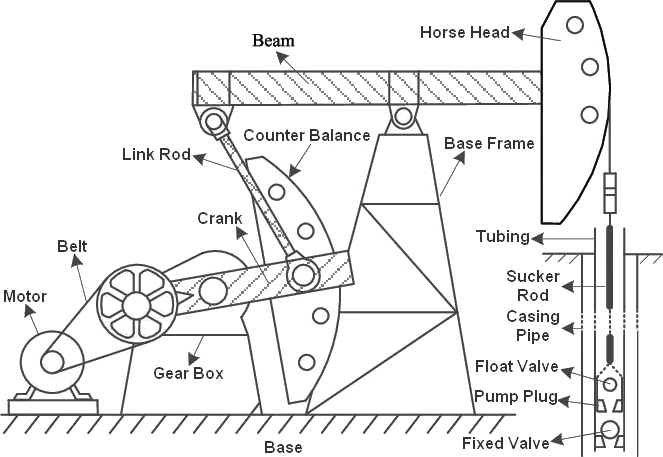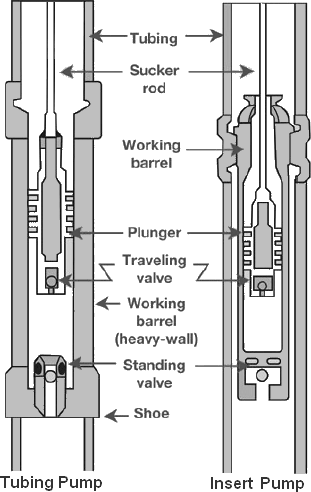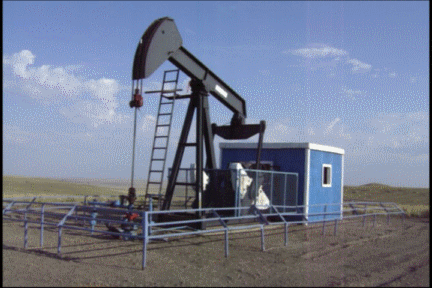Sucker Rod Pump
(Nodding Donkey)
In the oil and gas industry, numerous technologies and equipment play a crucial role in the extraction and production of petroleum. One such essential component is the Sucker Rod Pump (SRP) popular name Nodding Donkey, and is an essential tool that helps in efficiently pumping oil to the surface from underground reservoirs.
Oil production by sucker rod pumps is one of the most widely used methods of artificial lifting in the world. As a function element of a piston rod pump set, SRPs are operated by a piston rod cord from a surface drive. SRPs have a wide range in pumping pressure and flow rate. These pumps are manufactured in accordance with e.g. the international standard API 11-AX or Russian standard GOST 31835-2012. They can be conventional (insert or tubing), specialized (for complicated operating conditions) and custom-made (designed on customer request).
Sucker Rod Pump Drive
The sucker rod pump drive is a surface component of a sucker rod pump set designed to generate the reciprocating motion of a rod system and a pump. There are drives of various types: beam pump, hydraulic, belt drive and linear rod pumps mounted on the wellhead and on the base. The load capacity of drives ranges up to 15 tons, the stroke length of the polished rod up to 8 meters.

Parts and operation
The American Petroleum Institute (API) has standardized two types of rod pumps: insert pumps and tubing pumps. Both types have five basic components: a plunger, a traveling valve, a barrel tube, a standing valve and a holding device. In this system, the standing unit remains in a fixed position while the traveling unit moves up and down with the stroke. During the upstroke, the valve of the traveling unit closes and allows the fluid to be drawn upward, while the valve in the standing unit opens to allow the fluid to fill the vacuum created in the standing unit. During the downstroke, the valve in the standing unit closes and the valve in the traveling unit opens to allow the liquid in the standing unit to fill the traveling unit. This cycle is repeated as long as the pump operates.

Tubing Pumps are placed on the barrel on the tube and become part of the assembly. With a larger bore, the resulting volume is the maximum amount of fluid which can be displaced with each stroke; they are used where a large volume of production is the first requirement. Tubing pumps require pulling the tubing in order to service the pump barrel.
Insert Pumps are installed in the working barrel above the plunger. The complete pump is attached to and inserted in the well tubing with the sucker rod string. This type of rod pump can be pulled out as a complete unit for maintenance and repair. While insert pumps are harder to install in a well, they can have high production rates.

Because of its long track record and distribution around the world, the rod pump is usually chosen as the first choice for most onshore applications. Consequently, there are about 750,000 sucker rod pumps in operation around the world. In the United States, sucker rod pumps are used in about 350,000 oil wells.

